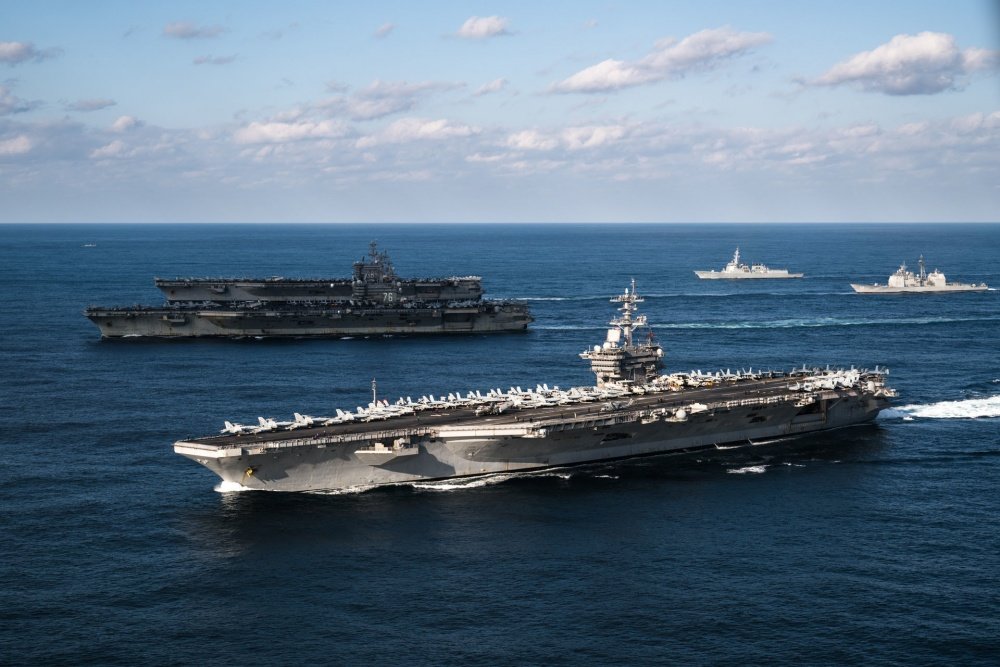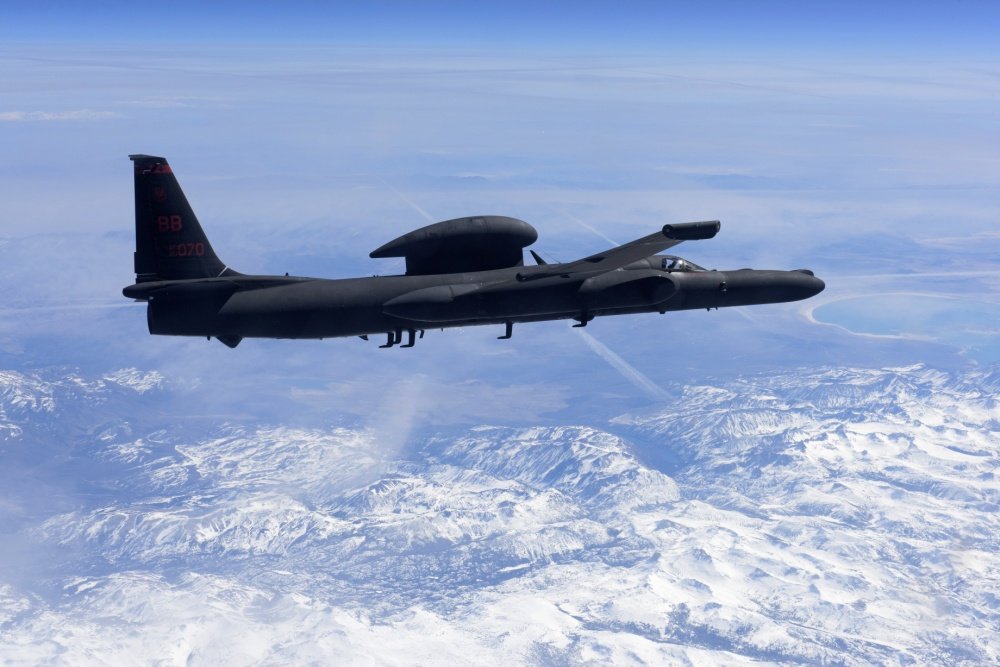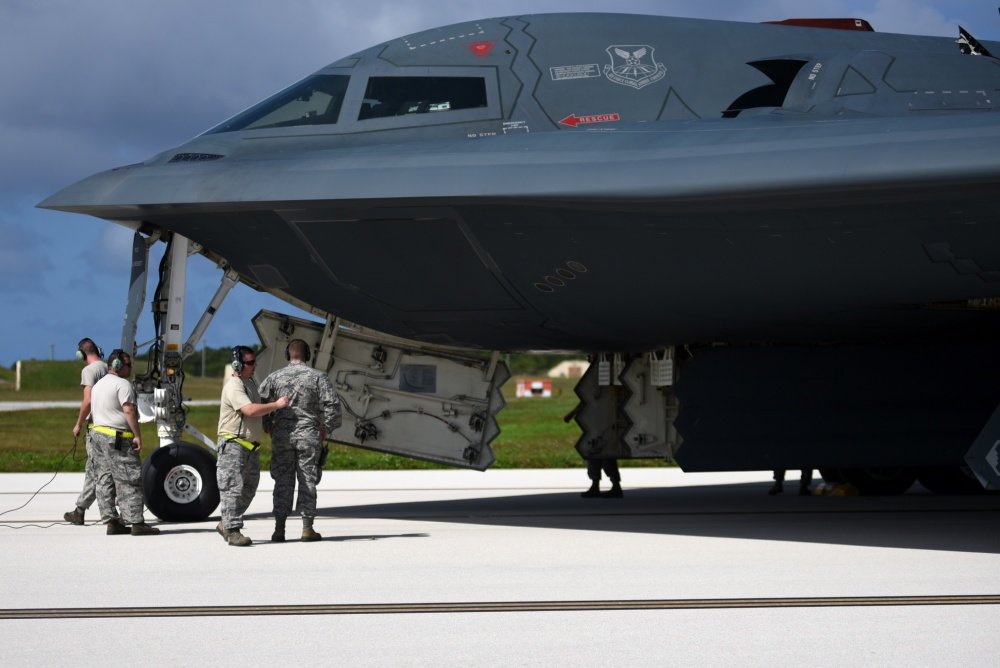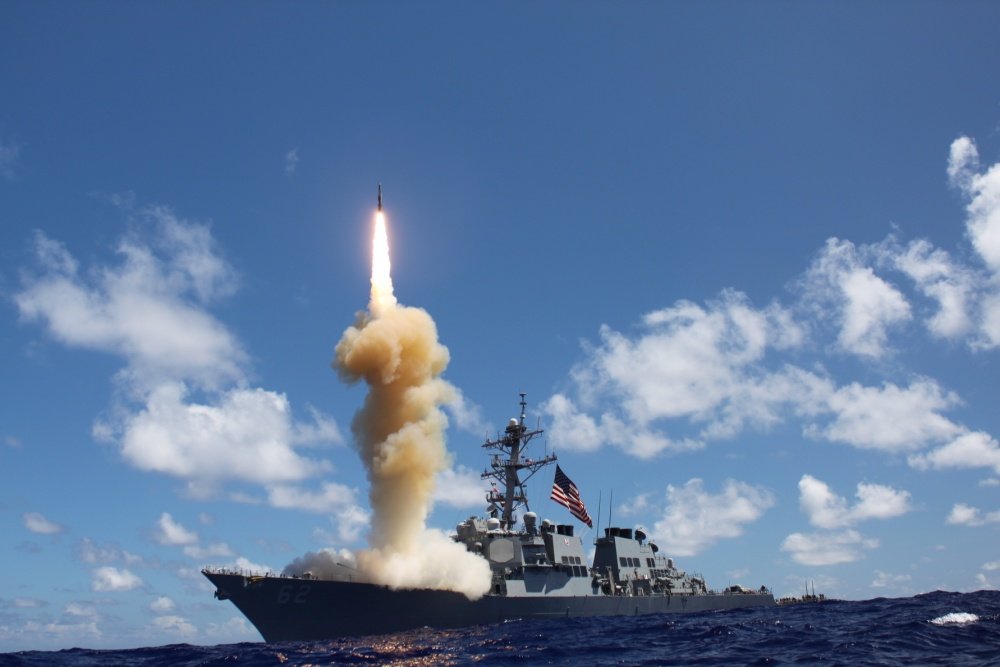China Fires ‘Carrier Killer’ Missile as a Warning Shot to Washington

WESTERN PACIFIC (Nov. 12, 2017) The aircraft carriers USS Ronald Reagan (CVN 76), USS Theodore Roosevelt (CVN 71) and USS Nimitz (CVN 68) transit the Western Pacific. U.S. Navy photo by Lt. Aaron B. Hicks/Released.
China test-fired two missiles into the South China Sea on Wednesday, including a so-called carrier-killer missile, in a move intended by Beijing to send a warning to Washington, experts say, and which underscores a new normal of tit-for-tat military maneuvers as both sides jockey for advantage in the contested region.
“If China thinks launching ballistic missiles will somehow intimidate the United States and our allies, they’re sorely mistaken,” Marshall Billingslea, the US special presidential envoy for arms control, tweeted on Thursday.
The Chinese missile shots come just one day after Beijing accused the US of flying a U-2 spy plane into a no-fly zone without permission during a Chinese live-fire military exercise in the Bohai Gulf. China condemned Tuesday’s U-2 flight as a “provocation.”
“The US action could easily have resulted in misjudgments and even accidents,” Wu Qian, a spokesperson for the Chinese Defense Ministry, said in a statement.
The US military, however, said the U-2 spy plane was flying “within the accepted international rules and regulations governing aircraft flights,” and that US military aircraft will “continue to fly and operate anywhere international law allows, at the time and tempo of our choosing.”

Despite the close timing, some China experts doubted whether China’s missile launches on Wednesday were a direct rebuke of Tuesday’s U-2 flight. Steve Tsang, director of SOAS University of London’s China Institute, said China’s missile tests would require political approval “at the highest level,” as well as time for the missiles to be moved into position and readied for launch.
“I think the test firing of such missiles publicly would have been decided before the U-2 flight and were used as a warning to the USA that China has operational ‘carrier-killing’ missiles and so the US Navy should back off,” Tsang told Coffee or Die. “I think it will have the exactly opposite result in stiffening US determination to prepare to stand up against a rising China […] that is now being seen as increasingly aggressive.”
The South China Morning Post reported that China test-fired two types of missiles on Wednesday — a DF-26B and a DF-21D.
The DF-26B is an intermediate-range ballistic missile with a range of some 2,485 miles and is designed to deliver conventional and nuclear warheads against ground and naval targets. The DF-26B is also able to carry hypersonic glide vehicles, which missile defense systems aboard US ships may not be able to intercept.
Notably, the DF-26B is the first Chinese conventionally armed ballistic missile able to strike Andersen Air Force Base in Guam, as well as other US installations across the eastern Pacific region.

With a range of about 1,000 miles, the DF-21D, colloquially known as the “carrier killer,” is touted by Beijing as the world’s first ballistic missile designed to strike naval targets. Defense experts say the DF-21D is equipped with maneuverable reentry vehicles, which may be able to defeat the missile defense systems aboard US Navy ships.
China has touted its long-distance so-called “carrier-killer missiles” as a game-changer when it comes to challenging America’s naval dominance.
Tong Zhao, senior fellow at the Carnegie-Tsinghua Center for Global Policy, agreed that while Wednesday’s missile launches were likely not a direct retort for the U-2 flight, they were clearly meant to serve as a warning to Washington.
“The missile firing, however, is probably a response to the perceived increase of US military activity in South China Sea in recent months, especially the operation of US aircraft carriers,” Zhao told Coffee or Die. “Both the DF-21D and DF-26 missiles that were fired have anti-ship capabilities and are thus a strong signal to Washington that Beijing has the military means to dispel US military vessels from key regions of the South China Sea.”

China is currently running multiple naval exercises, three of which began on Monday in the Pacific, ranging from the South China Sea to the Bohai Gulf near the Korean Peninsula. Separately, Chinese forces reportedly finished another exercise on Wednesday in the Yellow Sea. And earlier this month, China sent fighter jets into the Taiwan Strait amid a visit to Taiwan by US Health and Human Services Secretary Alex Azar.
That level of Chinese military activity is the highest in years, experts say.
Ryan Hass, a fellow at the Brookings Institution’s Center for East Asia Policy Studies, warned that China is increasingly dependent on “military signaling” to signal its “displeasure with US activities as US-China relations fray and diplomatic channels of communication experience disuse.”
“This growing dependence on military signaling is ill-advised,” Hass told Coffee or Die. “It produces imprecise messages that risk being misinterpreted, it invites the other side to respond in kind, and it raises risk of unintended escalation.”
With its withdrawal last year from the Intermediate-Range Nuclear Forces Treaty, the US has floated the possibility of deploying ground-based, medium-range missiles to the Indo-Pacific theater — part of a broader effort to push back against China’s rising military footprint in the region.
Signed by President Ronald Reagan and Soviet leader Mikhail Gorbachev in 1987, the Intermediate-Range Nuclear Forces Treaty, or INF, banned missiles with ranges between 300 and 3,400 miles. The US suspended its obligations under the INF Treaty in February 2019, claiming that Russia had been developing and deploying missiles in violation of the pact’s limits for years.
For its part, China was never bound by the so-called INF treaty’s missile restrictions. Consequently, some experts say the US decision to pull out of the pact was also intended to not let China gain a strategic advantage in the Pacific Ocean and South China Sea. Both of the missiles China launched on Wednesday would have fallen within the INF treaty’s proscribed operational ranges.

On Wednesday, the US slapped sanctions on Chinese companies and individuals for their role in China’s militarization of the South China Sea.
“The United States will act until we see Beijing discontinue its coercive behavior in the South China Sea, and we will continue to stand with allies and partners in resisting this destabilizing activity,” US Secretary of State Mike Pompeo said in a Wednesday statement, announcing the new sanctions.
China has had a recent spate of maritime confrontations with Vietnam and the Philippines in the South China Sea, ratcheting up an ongoing dispute over freedom of navigation in that body of water after Beijing began transforming natural atolls into military outposts. Other nations with territorial claims in the South China Sea include Malaysia, Brunei, and Indonesia.
The US Navy routinely conducts so-called “freedom of navigation” missions in the contested region, sometimes skirting nearby atolls and islands over which China has claimed ownership to assert the ability of vessels under any nation’s flag to lawfully traverse through recognized international waterways.
According to the Defense Department’s 2019 Indo-Pacific Strategy Report, China “seeks Indo-Pacific regional hegemony in the near-term and, ultimately […] global preeminence in the long-term.”
On Wednesday, US Defense Secretary Mark Esper arrived in Hawaii to begin a trip across the Indo-Pacific region and will visit ships involved in the semi-annual Rim of the Pacific, or RIMPAC, exercise.
”Your presence out here in the Indo-Pacific is all about making sure we compete with China and […] if necessary, that you can fight and beat them anytime, anywhere,” Esper told sailors aboard the USS Essex on Thursday, according to a Department of Defense release.

BRCC and Bad Moon Print Press team up for an exclusive, limited-edition T-shirt design!
BRCC partners with Team Room Design for an exclusive T-shirt release!
Thirty Seconds Out has partnered with BRCC for an exclusive shirt design invoking the God of Winter.
Lucas O'Hara of Grizzly Forge has teamed up with BRCC for a badass, exclusive Shirt Club T-shirt design featuring his most popular knife and tiomahawk.
Coffee or Die sits down with one of the graphic designers behind Black Rifle Coffee's signature look and vibe.
Biden will award the Medal of Honor to a Vietnam War Army helicopter pilot who risked his life to save a reconnaissance team from almost certain death.
Ever wonder how much Jack Mandaville would f*ck sh*t up if he went back in time? The American Revolution didn't even see him coming.
A nearly 200-year-old West Point time capsule that at first appeared to yield little more than dust contains hidden treasure, the US Military Academy said.












